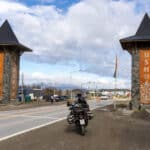Moving on from Ushuaia
Fall has arrived in Ushuaia. The town is quiet and snow is falling almost daily. The last cruise to Antarctica for the 2023 season has departed and far fewer gringos walk the streets. Ushuaia is a beautiful small city with mountains on 3 sides and the Beagle Channel to the south. It is known as FIn del Mundo (the End of the World)., While the locals do seem to love the slower pace that winter brings, they recognize that the life blood of the town is summer and the tourist dollars it brings to the area. There is some winter tourism for skiing and other snow sports, but it is not really what most people would consider to be world-class. Even in early fall you can see the potential beauty that winter must bring to this town.
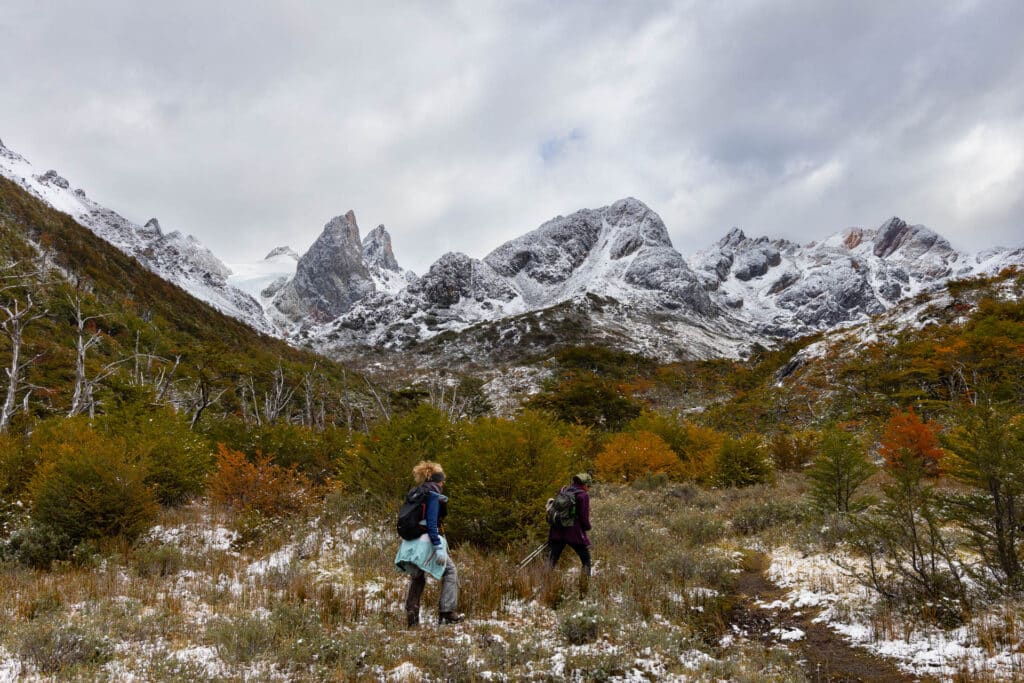
As I rode out of town and eastward over Garibaldi Pass, I knew that some part of me would not have objected to spending the winter here. It feels protected and apart from the rest of the world. It is that “apartness” that drives the cost of most things even higher than US prices. But no, staying still is not in the plan quite yet. It is time to move forward, while looking briefly backward.
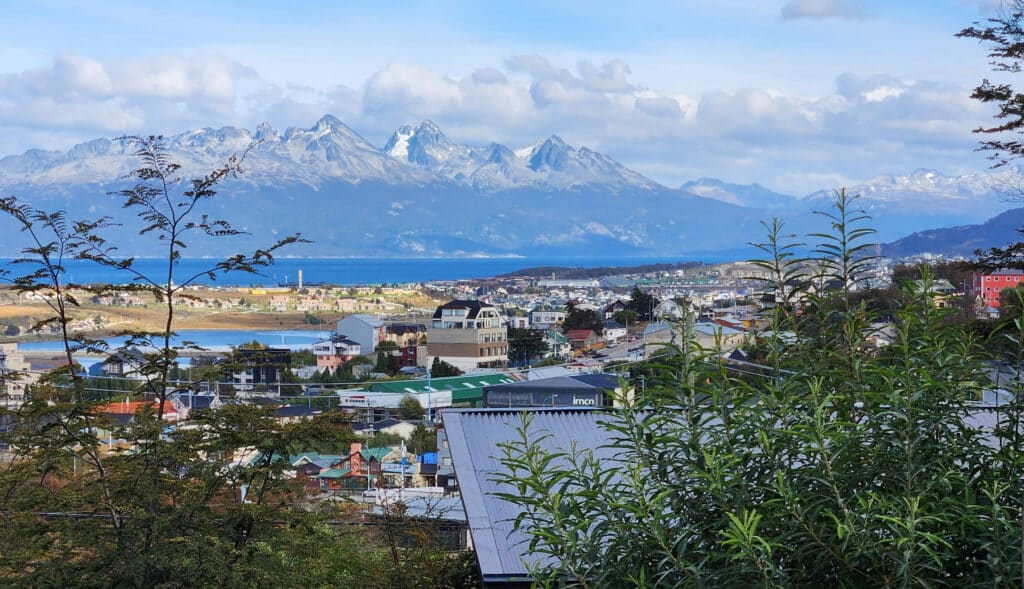
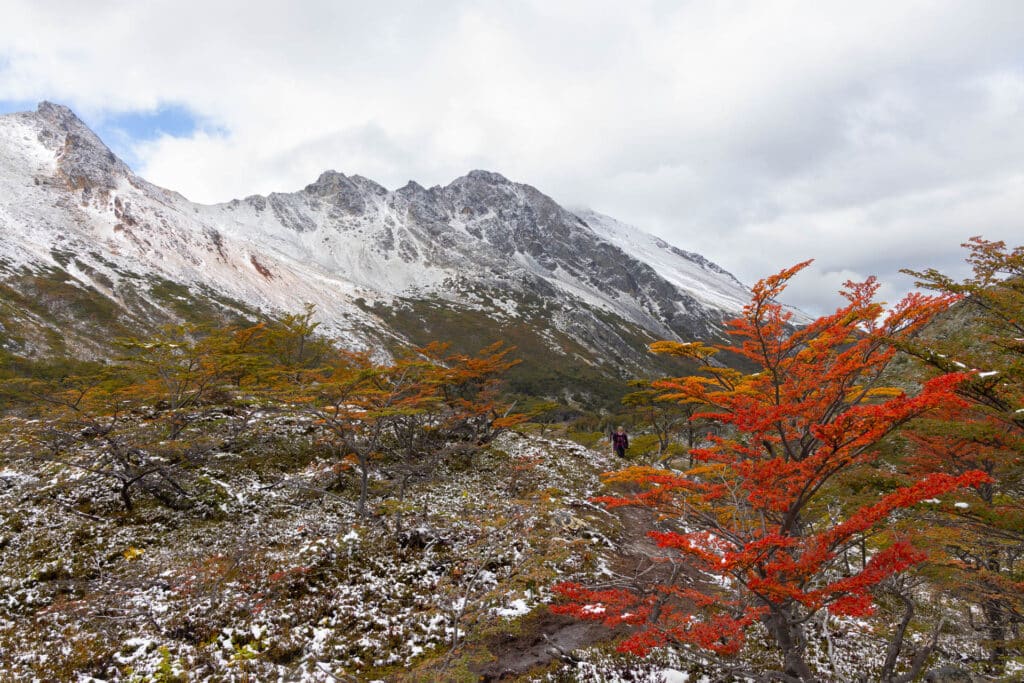
Outdoor activities are everywhere in the mountains that rise from the northern edge of town and protect it from the howling winds of the rest of Tierra del Fuego. Yes, the wind blows off the ocean here, but nothing like the 50-80 km/hr winds that lie only a few miles to the northeast. Hiking trails are everywhere and many locals can be found on them any day of the week. Kayaking, fishing, skiing, sailing are part of the culture. The town is walkable, which is rare in much of the world, but common in South America. Yes, it would have been easy to hunker down here for a few months.
Ushuaia is the gateway to the 7th continent, but in reality it is only one of three such gateways. Australia and New Zealand both serve as home ports for cruise ships to the southern continent. There used to be cruises from South Africa, but they seem to be non-existent over the past 2 years.
From Ushuaia it takes most cruise ships 2+ days to reach “Antarctica” after an often rough crossing of the Drake Passage. More accurately, it takes that time to reach the South Shetland Islands which are technically Antarctica, but not connected to the mainland. Perhaps the most famous of these is Deception Island, the caldera of a collapsed and still somewhat active volcano.
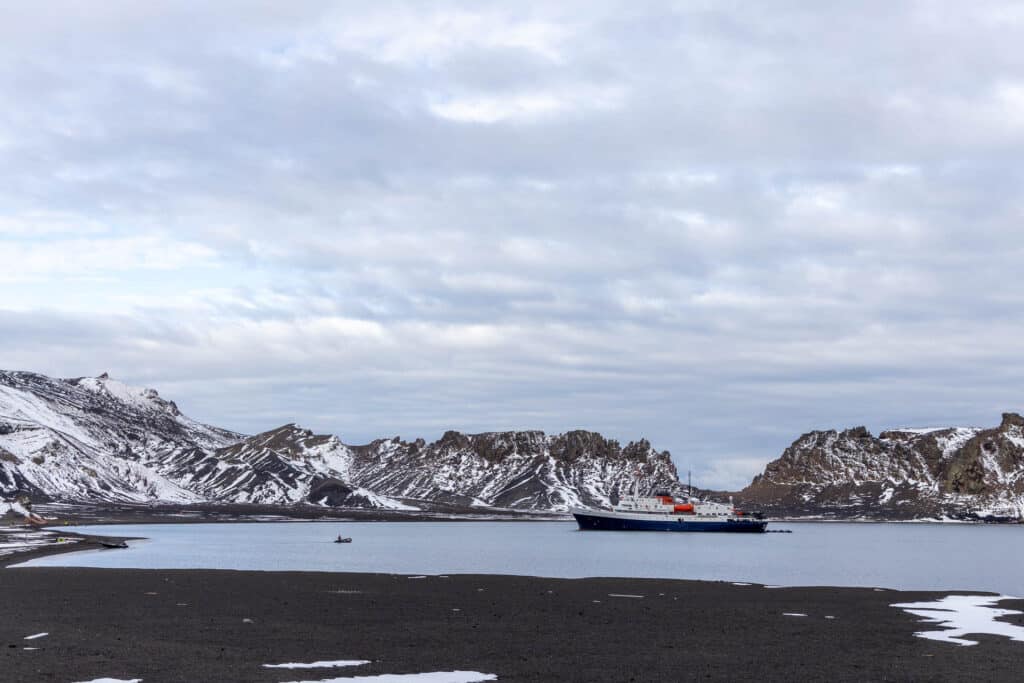
The caldera is open to the sea through a narrow passage, large enough for smaller cruise ships to enter. As you enter, it is easy to imagine you are sailing with Captain Nemo and seeking refuge in a secret harbor. Or, perhaps accompanying a nautical Butch Cassidy to Robber’s Roost. Once inside, the passage seems to disappear and there are snow covered mountains in every direction. Not that many animals live within Deception Island, but it is a place that will impress nonetheless. The crumbling remains of one of the original whaling stations is here, dating from the time before the invention of processing ships. The whales were killed at sea and towed here for processing. The large tanks for storing the valuable whale oil are still standing. As part of the Antarctic Treaty (more on that in a minute), most abandoned structures must be removed, but those designated as historically important are allowed to remain. This is one of them.
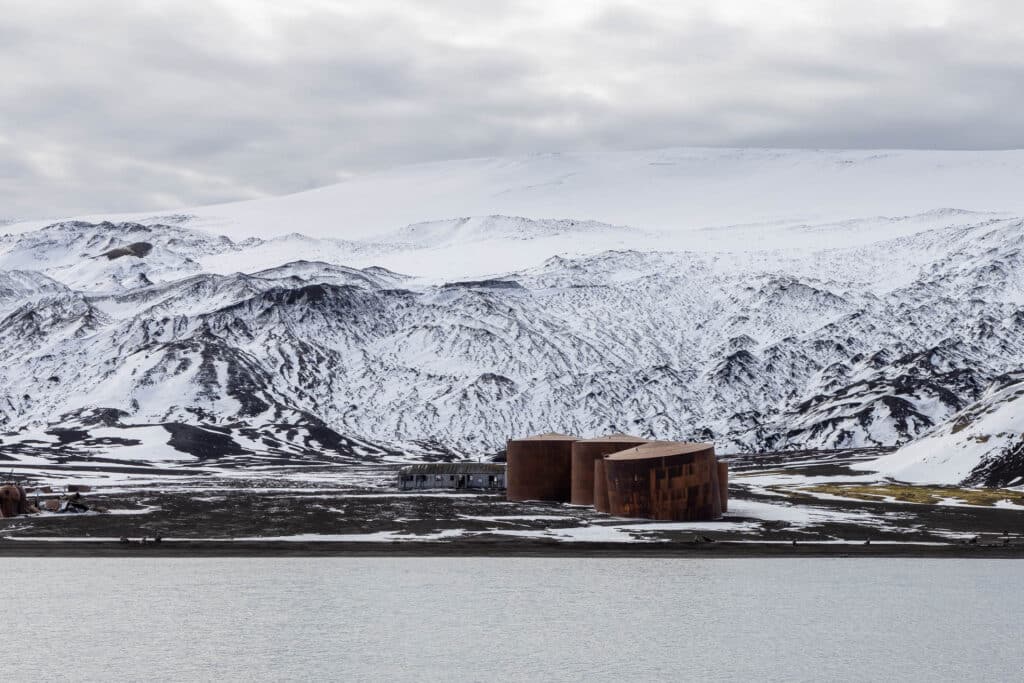
As the cruise ships hop from island to island and then further southward to the Antarctic Peninsula, you will see so many penguins and whales that eventually everyone becomes a bit ho-hum about their presence. Hard to imagine if you have never been, but it seems to be the typical human response. Oh, another humpback whale? How nice. By the time your cruise is coming to an end, the spotting of whales from the ship will get a lack-luster response at best from most passengers.
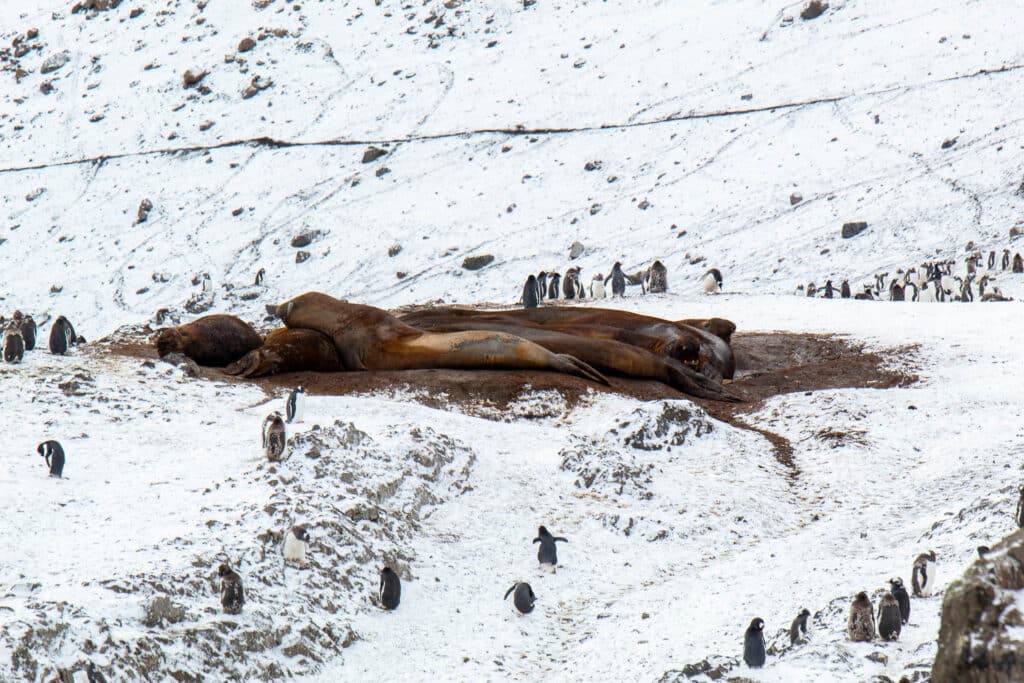
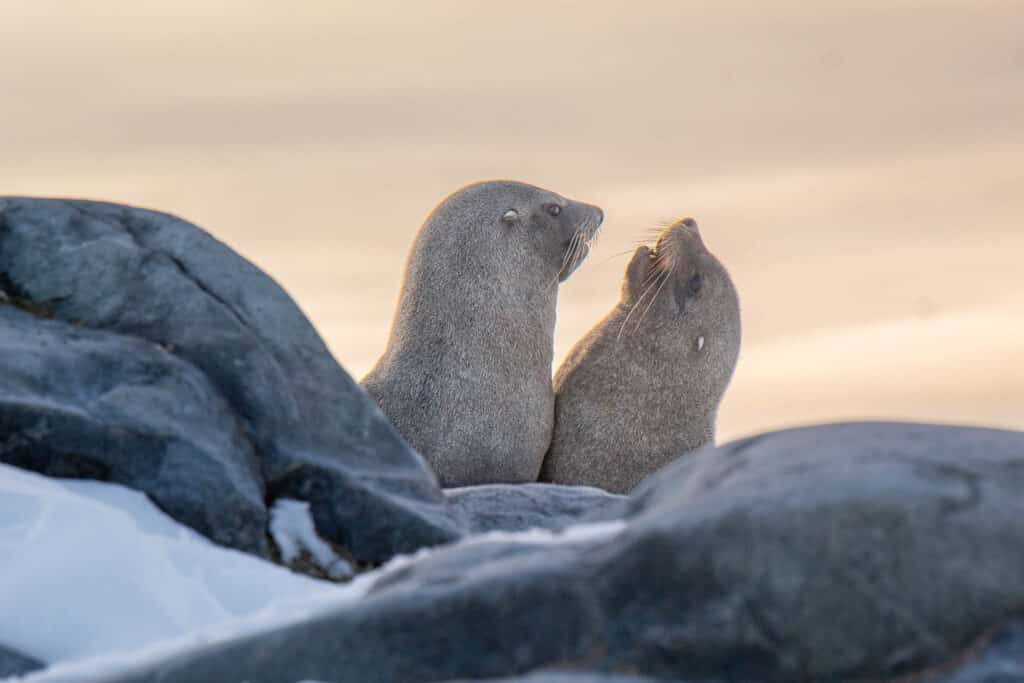
There is a set of rules for being in Antarctica that are defined in the Antarctic Treaty. The treaty, originally created in the late 1950s, demilitarized Antarctica, prohibited all mining or removing of natural resources (e.g. no fishing), established a zone free of nuclear tests and prevented the disposal of radioactive waste, and ensured that it is used for peaceful purposes only. So far, the treaty has been adhered to by the signatories that includes: Argentina, Australia, Austria, Belgium, Belarus, Brazil, Bulgaria, Canada, Chile, China, Colombia,Cuba, Czech Republic, Denmark, Ecuador, Estonia, Finland, France, Germany, Greece, Guatemala, Hungary, India, Italy, Japan, Korea DPRK, Korea ROK, Monaco, Netherlands, New Zealand, Norway, Papua New Guinea, Peru, Poland, RomaniaRussian Federation, Slovak Republic, South Africa, Spain, Sweden, Switzerland, Turkey, Ukraine, United Kingdom, United States, Uruguay, Venezuela.
Many people believe that the treaty will remain in force until someone discovers something valuable enough to cause one or more countries to ignore the treaty. As the treaty has no specific penalties for ignoring it, who knows what happens then. Some argue the recent harvesting of Antarctic krill violates the treaty.
Many of the rules in the treaty apply to tourism and one specifically prohibits landing more than 100 passengers ashore in any one place. Large cruise ships must send only 100 at a time and that limits the amount of shoretime each person gets. Smaller ships can land their entire group. A marked advantage for smaller ships and allowing far more shore time for their passengers.
Antarctica is pretty much everything you might imagine if you have watched any of the BBC or NatGeo films about the continent. Even late in the summer season it is at or below freezing, snow falls frequently, and animals abound. In a few weeks most of the animals will have abandoned the land for water that will be warmer than the air. Other parts of the continent, not so easily or quickly accessed from Ushuaia, would be interesting to visit. But, alas they are beyond reach.
Cruising on a small ship (The MV Ushuaia) has both advantages and disadvantages. The history of the MV Ushuaia is interesting as well. It started as a NOAA research vessel and then was purchased by the CIA for surveillance of Cuba. It began its operation as a tourist vessel in the late 1990s.
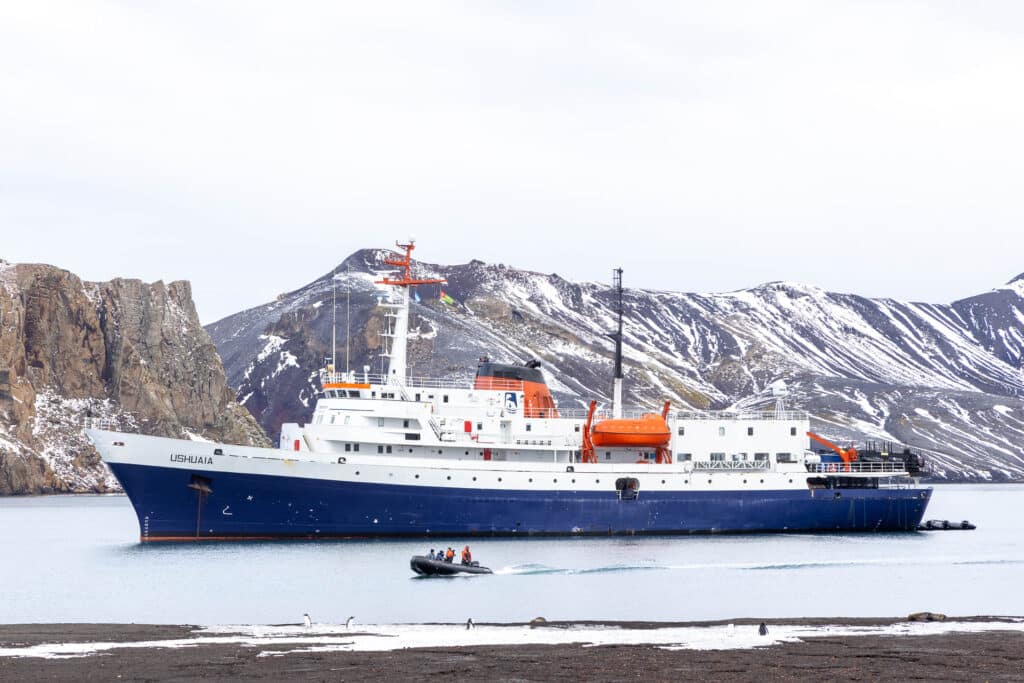
With a max 90 passengers, and a proportionally smaller crew, you quickly get to know everyone. The multi-national bridge crew welcomes you onto the bridge anytime between 8AM and 8PM. As stated earlier, shore time is greater than that of a larger vessel and there are places that only a smaller vessel can get to. Dropping anchor relatively close to shore, Zodiacs ferry passengers back and forth. On the flip side, some of the luxuries that larger ships can offer are absent here. Eating does not occur 24/7. There are only three meals and a mid-afternoon snack. The limited variety and quality of the snack was my only real complaint. You won’t gain weight on this ship. Coffee, tea and instant hot chocolate are the only things that are free and always available on the MV Ushuaia. A coke will cost you $4. The bar is limited and expensive, leading many forewarned passengers to BYOB. It can only be consumed in your room, and in theory, you must pay the boat $30 for every bottle you open on board. There are many times, particularly the 5 days of Drake Passage time that get boring. There are limited things to do and for the most part passengers must entertain themselves. The expedition crew (not the ones running the boat) are mostly 20-somethings and while they do offer some helpful lectures on Antarctica, the treaty, and the animals, they are for the most part not experts in the field.
All that said, for the advantages listed above, I can fully recommend the MV Ushuaia (booked through Freestyle Adventure Travel). Last minute cruises (I booked only 3 days before the penultimate tour of the season) cost only about $4000 for 10 days).
Now the northward trek begins. Rather than retracing my steps up the Atlantic coast of Argentina, I exited Tierra del Fuego to the west at Porvenir and took the ferry to Punta Arenas. As soon as I get a good weather day I will begin my exploration of the areas around Puerto Natales, El Calafate, El Chalten, and Perito Merino, and San Carlos de Bariloche. The places that to many are synonymous with Patagonia.

